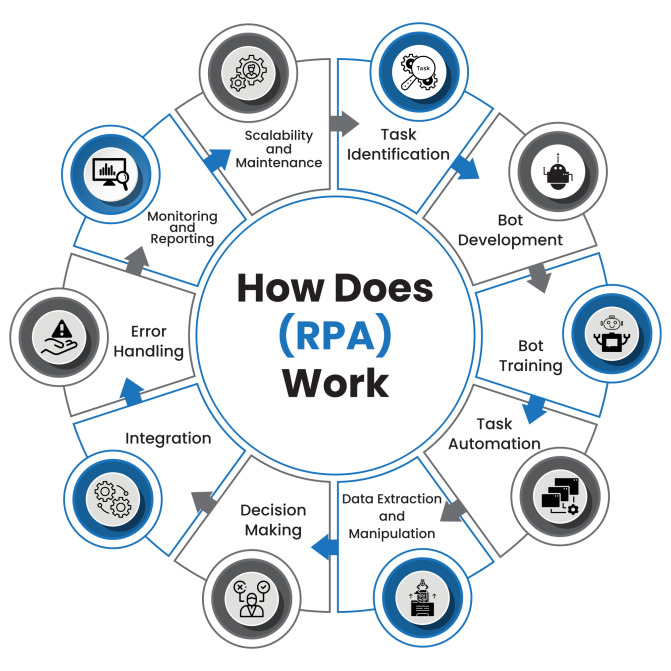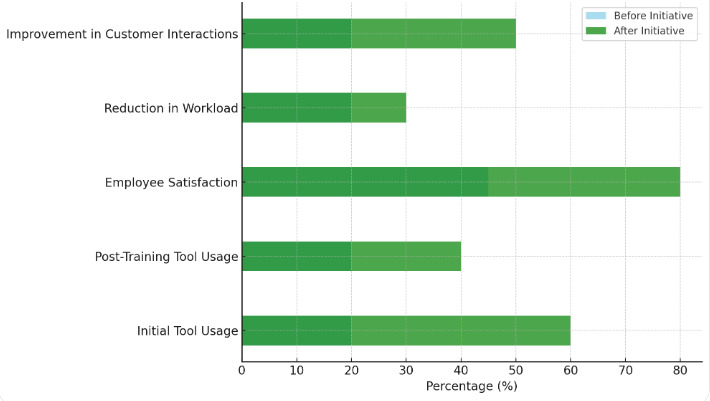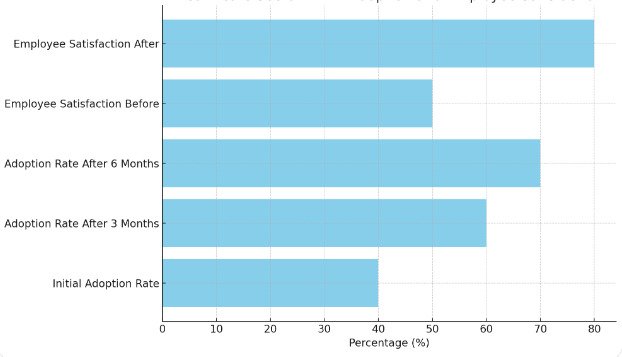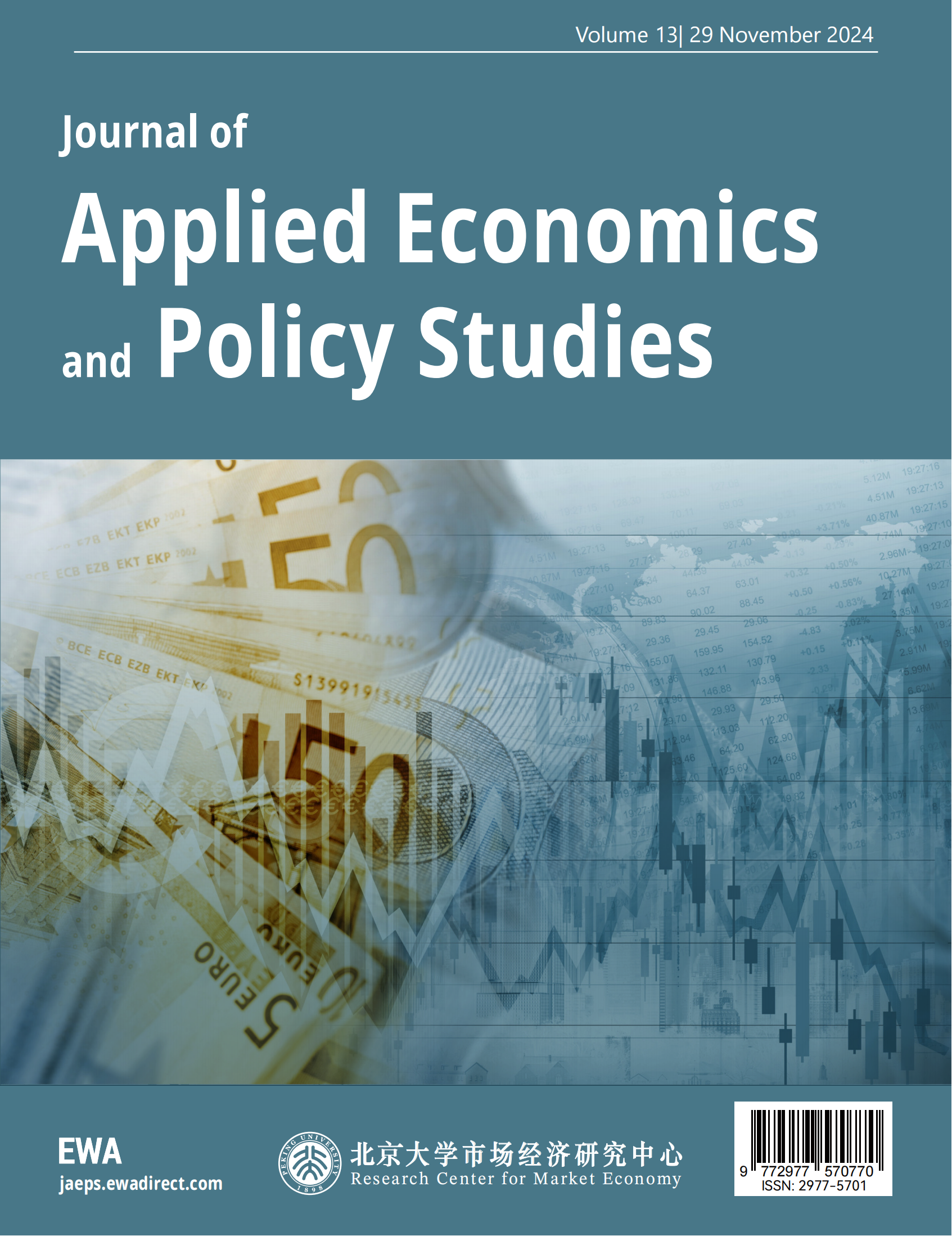1 Introduction
Digital transformation has become a matter of strategic urgency and competitive advantage for organisations. It entails the use of digital technologies across the entirety of a business, changing how organisations operate and create value for their customers. Artificial intelligence (AI), big data analytics, cloud computing and SaaS (Software as a Service) business models are transforming industries, and employees are having to learn not just new tools but entirely new ways of working. Technical expertise is just the starting point for digital transformation. The most successful companies will also need employees who are creative, think differently and have the flexibility to adapt to rapidly changing digital demands. They will also need to deal with emerging agile methodologies that put greater responsibility on the employee to collaborate and make quick decisions. Employees need to be encouraged to take more initiative and self-manage, and work as a collective team. They need to be empowered to make autonomous decisions and solve problems without direct supervision. This requires a different type of workforce from those that merely followed instructions. Increasingly, organisations will want to take more responsibility for developing a digitally skilled workforce and provide the support and resources needed for their employees to thrive and work digitally [1]. The paper tries to resolve the obstacles in employees’ adaptation to digital tools such as the resistance to change and employees’ lack of training and technological complexity. Moreover, the paper clarifies how the misalignments that exist between the leadership goals and the organisational culture prevent employees from adapting to digital tools successfully. The paper will analyse the case studies from the retail and healthcare sector to understand how to empower employees and how to align the leadership with digital transformation goals to facilitate the shift to digital workflows. This paper focuses on technological and human barriers and provides recommendations that can help overcome the technological and human obstacles to enable employees to develop the appropriate skills and self-confidence to successfully move to digitalisation.
2 Barriers to Employee Adaptation in Digital Transformation
2.1 Resistance to Change
One of the biggest barriers to employees adapting to digital transformation is change-aversion. Many employees who were hired to perform a certain task feel threatened by new technologies, fearing that they will become redundant, or that their training will become obsolete. At its simplest, this change-aversion is a psychological and cultural issue: employees might have spent years adapting their skills to flow with certain workflows, such as collaborating on paper or using physical tools, and will fight digital tools that try to disrupt these processes by persuading employees to stop working in their preferred way. At a deeper level, organisational culture influences how employees perceive and adapt to change. In companies that have not embedded innovation into the fabric of their culture, employees might be more likely to see digital tools as transitory fads, rather than long-term investments worth committing to, because they will prioritise existing values and routines over adopting new ones. They might also fear failure or reprimand when experimenting with digital tools for the first time, because they have not been given the freedom to mentally rehearse or try new things, meaning they lack ‘psychological safety’[2].
2.2 Lack of Adequate Training
There is a significant gap between the tools that are made available to organisations at a technical level and the training that is provided in terms of employees’ capabilities to use these tools in practice. This gap is particularly apparent in the context of the one-size-fits-all type of training that is often provided. Such training is equally available to employees in different organisational roles, despite the fact that the digital toolscape may differ significantly across organisational divisions and workflows. In practice, this may result in employees feeling overwhelmed by the functionality of the tools they are provided with or lacking the necessary skills to integrate these tools into their overall workflows. Related to this type of training is the lack of real-world application. Employees may get trained in terms of the functionality of the tools they are provided with, but they may not get adequate guidance on how they should actually integrate these tools into their workflows. For example, a study conducted by Deloitte in 2020 (see Table 1 below) [3] found that 68 per cent of employees experienced training in digital tools that did not ‘translate to their job’; that is, the training made them feel that the tools were not intended for the work they had to do. This can lead to disengagement, and ultimately to the underutilisation of digital tools – even if the company has invested significantly in the upskilling of employees [4].
Table 1. Deloitte 2020 Study: Training Program Satisfaction
Training Program Type |
Employees Satisfied (%) |
Employees Dissatisfied (%) |
Generic Training |
32 |
68 |
Role-Specific Training |
68 |
32 |
Real-World Application |
85 |
15 |
2.3 Technological Complexity and Inefficiency
The other significant obstacle is the inherent complexity of digital resources. High-end technology promises efficiency, but a lot of the technology has a long learning curve and employees have to adapt it very slow. Enterprise resource planning systems (ERPs) or data analytics tools, for example, can have complicated user interfaces and features that frustrate end-users especially those with minimal technical expertise. And the tools can be tricky to learn when compared with popular platforms such as Office 365 which are made to be intuitive [5]. They are complicated and so may be hard for employees to use in the regular workflows, which can cause a lack of adoption. All of this gets made more confusing by unsatisfactory integration — meaning employees are running around in between two tools that don’t necessarily speak the same language and this leads to further frustration [6].
3 Organizational Barriers
3.1 Misaligned Leadership Goals
One of the most persistent organisational problems impeding successful digital transformation is a lack of alignment between leadership goals and employee skill development. Leaders often describe digital transformation in terms of transforming their businesses – for example, to increase revenue or improve customer service. But they tend to pay less attention to transforming the culture of their employees. Research finds that leadership often neglects to foster digital cultures, in part because leaders don’t make clear how they want employees to use digital tools in their daily work. Without a clear vision of what digitalisation entails for most workers, employees often feel uncertain about the relevance of new tools, which in turn leads to underuse [7]. Worse, leaders also tend to measure the success of digital efforts based on business outcomes rather than employee uptake of digital tools. This gap is easily detectable, and it makes employees less likely to engage with digital tools if they sense that leadership is indifferent toward the application of new skills, and if digitalisation is not tied to clear, measurable targets.
3.2 Resource Allocation and Prioritization
Lack of resources is yet another common reason for digital transformation struggles. Organisations that are unable to devote enough time, budget or technical support for employees to learn to use digital tools can also hamper their adoption [8]. Asking employees to learn digital technologies while fulfilling their other work responsibilities can be stressful and lead to burnout. Moreover, insufficient IT support can exacerbate the situation. Employees might become discouraged if the IT department is unable to help them with technical issues when they encounter problems with digital tools [9]. This can drag out adoption and eventually kill their enthusiasm for the digital transformation effort.
4 Solutions for Overcoming Barriers and Misalignments
4.1 Tiered Application of Digital Tools

Figure 1. Work Process of RPA (Source: kastech.com)
Figure 1 illustrates the work process of Robotic Process Automation (RPA), which represents a key aspect of digital transformation by automating routine tasks and streamlining workflows. However, firms with rigid, hierarchical cultures often struggle to fully support and integrate RPA and similar digital tools into their operations. In such environments, employees may have limited freedom to experiment with new technologies due to fears of failure or stepping outside established protocols. This lack of flexibility can inhibit the agility required for digital innovation [10]. As shown in Figure 1, the success of RPA relies on continuous integration, decision-making, error handling, and monitoring, processes that demand employee engagement and active participation. Without a culture that encourages experimentation and learning, these steps become fragmented, and employees may default to old, manual methods, resulting in hybrid workflows that underutilize the full potential of digital tools. For digital transformation to succeed, organizations must foster a culture that not only embraces RPA but empowers employees to engage with the technology confidently and creatively.
4.2 Customized Training for Practical Use Cases
At the same time, companies should move away from generic training programmes and become role-based, identifying the right digital tool for the right type of employee – both in terms of organisational needs and employee characteristics. With the growing number of tools for process automation (such as RPA), data analytics, reporting (eg, PowerBI) and low-code development, HR and IT departments should focus on tools for which the user interface is intuitive and accessible to people who are not IT professionals. as well as make a shift from generic training programmes to tailored role-based training with a focus on applications and use cases. This way, those tools can be used by employees flexibly and autonomously in their work which could empower their creativity and be agile. As a response to concerns about the immaturity of certain digital tools, organisations should focus on the usability and adaptability of products. However, the most important factor, after the initial training, is to create a metric that can evaluate employees’ digital competencies and check whether they are able to use the tools in their work. The system should be focused not only on the technical know-how but also on the real application of digital skills in daily tasks. Simultaneously it can capture the real needs of employees and how to improve the training methods and plans.As employees’ digital ability increases, and the market for digital products grows, companies must periodically update and expand the array of skills that their training programmes cover, in a constant, iterative process that keeps pace with emerging digital environments and increases both engagement and adoption.
4.3 Leadership Advocacy and Realignment
Employee empowerment needs to be fundamental to any digital transformation effort. Executives might have different ideas about how the company needs to change due to digital business adjustments. However, one thing that doesn’t change is the need to invest in employees’ digital skills to better prepare them for the future. Leaders can more clearly align digital transformation goals with employee development by recognising that investing in building and expanding employees’ digital skills is the centrepiece of the entire transformation. Leaders must be wholly committed to this and build an organisational culture focused on employees’ development, not just business outcomes. This requires leaders to clearly communicate a digital vision to employees so they understand the strategic context for their role in the transformation. When leaders focus on skills development and employees’ engagement rather than on business outcomes, they build a more resilient digital culture; reduce resistance to change; and create organisational conditions for sustained digital success. For managers, it’s important to deeply understand that employee capability-building is the foundation of any digital transformation effort.
5 Case Studies and Empirical Evidence
5.1 Case Study 1: Digital Transformation in Retail

Figure 2. Digital Transformation in Retail: Before vs After Initiative
A leading retail company initiated a digital transformation project related to the chatbots powered by Artificial Intelligence (AI) along with data analytics tools for inventory management. The initial response from the employees was negative as they tended to resist the new tools as they perceived the risk that automation could lead to the loss of their jobs. The company was able to break through this resistance with the implementation of a tiered training program and clear emphasis on the tools being built into the day-to-day workflows. Specifically, while usage of the two tools was at 60% at the start of this initiative, it rose to 100% after the tiered training program and digital transformation were implemented in the retail sector. Figure 2 clearly demonstrates the positive impacts of introducing the tiered training program and digital transformation initiative which resulted in a significant increase in tool usage, employee satisfaction, reduction in the workload, and improvement in customer interactions.
5.2 Case Study 2: Healthcare Sector

Figure 3. Healthcare Sector - EHR Adoption and Employee Satisfaction
A major hospital had very low adoption rates for its new electronic health record (EHR) system. In particular, the hospital was having difficulty with older employees. These employees found the system complex and difficult to use. Employees need to understand each step of the process to eliminate confusion. Figure 3 illustrates progression of EHR system adoption rates and increase in employee satisfaction as the training progresses for the training program undertaken by the hospital in the healthcare sector. In order to overcome these barriers, the hospital first developed a training program that was conducted gradually and was role specific. Step two involved practical, hands-on training followed by real-world application. Step three included continuous support and leadership involvement in emphasizing the importance of using the system. Within six months of implementation, adoption rates increased by 30%.
6 Conclusion
It is true that digital transformation can greatly improve organisations’ performance and employees’ efficiency if and when it has been implemented. But this is only possible if organisations overcome the resistance to change that seems to plague the digital readiness of employees. As we have pointed out in this paper, resistance to change, insufficient training and complexity of digital tools are often the consequence of organisational misalignments, such as disconnect between leadership goals and organisational structure for employee development. Essentially, this change is fundamentally about employees rather than technology, which is the crux of this successful transformation. Organisations need to create a systematic approach for employees to learn digital skills, be creative and adaptable, by providing on-the-job training, regular feedback loops and evaluation criteria, and a commitment to ongoing support, knowledge and resources so that these skills can be exercised in the digital landscape. As a conclusion, talent management is the key factor to success in all digital transformations. Leaders who want to embed digital transformation into their business models must continuously educate themselves about the fact that capability development of employees is not a one-off effort but a continuous, iterative process. Only through continuous and iterative support for their employees will companies lead to digitally skilled, confident and motivated employees who use the digital tools to the full extent of their capabilities, and in the best interests of themselves and their employer.
References
[1]. Van Der Schaft, A. H. T., et al. (2024). How employees experience digital transformation: A dynamic and multi-layered sensemaking perspective. Journal of Hospitality & Tourism Research, 48(5), 803–820.
[2]. Leo, W. W. C., Laud, G., & Chou, C. Y. (2023). Digital transformation for crisis preparedness: Service employees’ perspective. Journal of Services Marketing, 37(3), 351–370.
[3]. Shwedeh, F., Aburayya, A., & Mansour, M. (2023). The impact of organizational digital transformation on employee performance: A study in the UAE. Migration Letters, 20(S10), 1260–1274.
[4]. Ullrich, A., et al. (2023). Employee involvement and participation in digital transformation: A combined analysis of literature and practitioners' expertise. Journal of Organizational Change Management, 36(8), 29–48.
[5]. Wulandari, A. R., et al. (2023). Digital HR: Digital transformation in increasing productivity in the work environment. Jurnal Publikasi Ilmu Manajemen, 2(4), 29–42.
[6]. Galanti, T., et al. (2023). Digital transformation: Inevitable change or sizable opportunity? The strategic role of HR management in Industry 4.0. Administrative Sciences, 13(2), 30.
[7]. Demir, M., Yaşar, E., & Demir, Ş. Ş. (2023). Digital transformation and human resources planning: The mediating role of innovation. Journal of Hospitality and Tourism Technology, 14(1), 21–36.
[8]. Zoppelletto, A., et al. (2023). Organizational roles in the context of digital transformation: A micro-level perspective. Journal of Business Research, 157, 113563.
[9]. Purwanto, A., et al. (2023). Investigating the role of digital transformation and human resource management on the performance of universities. Available at SSRN.
[10]. Lau, V. P., & Shaffer, M. A. (2023). A typological theory of domestic employees’ acculturation stress and adaptation in the context of globalization. Academy of Management Review, 48(1), 57–77.
Cite this article
Xiao,H. (2024). Employee Role Transformation and Adaptation in Digital Transformation: Barriers, Misalignments, and Solutions in Digital Tool Application. Journal of Applied Economics and Policy Studies,13,33-38.
Data availability
The datasets used and/or analyzed during the current study will be available from the authors upon reasonable request.
Disclaimer/Publisher's Note
The statements, opinions and data contained in all publications are solely those of the individual author(s) and contributor(s) and not of EWA Publishing and/or the editor(s). EWA Publishing and/or the editor(s) disclaim responsibility for any injury to people or property resulting from any ideas, methods, instructions or products referred to in the content.
About volume
Journal:Journal of Applied Economics and Policy Studies
© 2024 by the author(s). Licensee EWA Publishing, Oxford, UK. This article is an open access article distributed under the terms and
conditions of the Creative Commons Attribution (CC BY) license. Authors who
publish this series agree to the following terms:
1. Authors retain copyright and grant the series right of first publication with the work simultaneously licensed under a Creative Commons
Attribution License that allows others to share the work with an acknowledgment of the work's authorship and initial publication in this
series.
2. Authors are able to enter into separate, additional contractual arrangements for the non-exclusive distribution of the series's published
version of the work (e.g., post it to an institutional repository or publish it in a book), with an acknowledgment of its initial
publication in this series.
3. Authors are permitted and encouraged to post their work online (e.g., in institutional repositories or on their website) prior to and
during the submission process, as it can lead to productive exchanges, as well as earlier and greater citation of published work (See
Open access policy for details).
References
[1]. Van Der Schaft, A. H. T., et al. (2024). How employees experience digital transformation: A dynamic and multi-layered sensemaking perspective. Journal of Hospitality & Tourism Research, 48(5), 803–820.
[2]. Leo, W. W. C., Laud, G., & Chou, C. Y. (2023). Digital transformation for crisis preparedness: Service employees’ perspective. Journal of Services Marketing, 37(3), 351–370.
[3]. Shwedeh, F., Aburayya, A., & Mansour, M. (2023). The impact of organizational digital transformation on employee performance: A study in the UAE. Migration Letters, 20(S10), 1260–1274.
[4]. Ullrich, A., et al. (2023). Employee involvement and participation in digital transformation: A combined analysis of literature and practitioners' expertise. Journal of Organizational Change Management, 36(8), 29–48.
[5]. Wulandari, A. R., et al. (2023). Digital HR: Digital transformation in increasing productivity in the work environment. Jurnal Publikasi Ilmu Manajemen, 2(4), 29–42.
[6]. Galanti, T., et al. (2023). Digital transformation: Inevitable change or sizable opportunity? The strategic role of HR management in Industry 4.0. Administrative Sciences, 13(2), 30.
[7]. Demir, M., Yaşar, E., & Demir, Ş. Ş. (2023). Digital transformation and human resources planning: The mediating role of innovation. Journal of Hospitality and Tourism Technology, 14(1), 21–36.
[8]. Zoppelletto, A., et al. (2023). Organizational roles in the context of digital transformation: A micro-level perspective. Journal of Business Research, 157, 113563.
[9]. Purwanto, A., et al. (2023). Investigating the role of digital transformation and human resource management on the performance of universities. Available at SSRN.
[10]. Lau, V. P., & Shaffer, M. A. (2023). A typological theory of domestic employees’ acculturation stress and adaptation in the context of globalization. Academy of Management Review, 48(1), 57–77.









